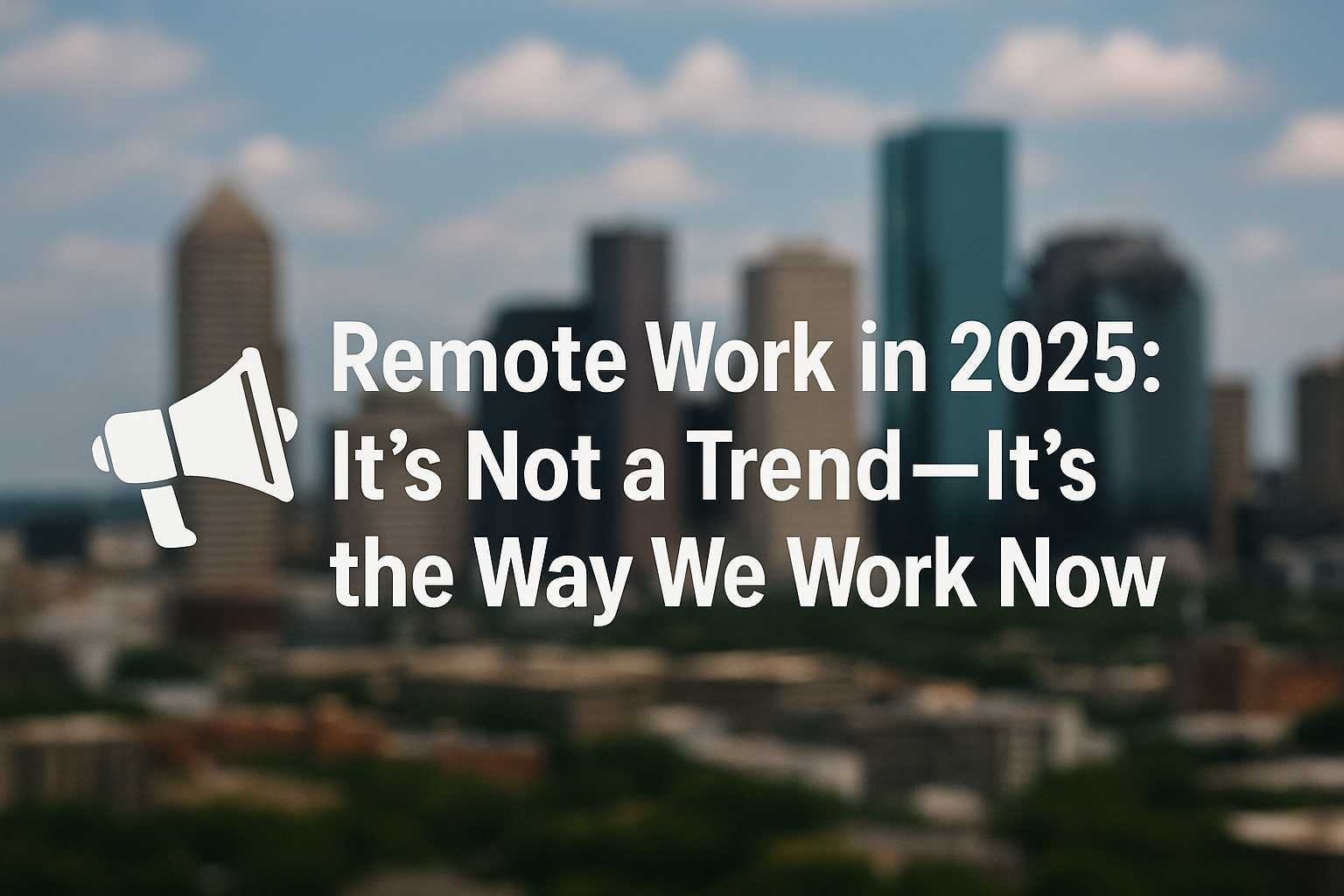Let’s stop calling it a trend. By now, remote work is how most people get things done—and for good reason.
Millions have ditched daily commutes, stiff office chairs, and strict 9-to-5 rules. They’re building careers from coffee tables, coworking spaces, and beach towns. And it’s working.
Remote work in 2025 has grown up. It’s no longer a pandemic experiment—it’s the backbone of how modern teams operate.
What the Numbers Say in 2025
- 💼 36 million Americans now work remotely. That’s nearly 1 in 4.
- 🌍 Over 50% of professionals split time between home and office.
- 📉 Companies pushing full RTO are seeing resignations outpace results.
- 🧠 Most remote workers say they focus better at home than in-office.
We’ve crossed a point of no return and there’s no rush to go back.
Why People Won’t Trade Flexibility for a Desk
Ask anyone who’s worked remotely for a year or more, and you’ll hear the same thing: “Why would I give up this freedom?”
We’re talking about:
- Skipping traffic and saving time
- Mid-day walks or family breaks without guilt
- Working when you’re most productive not when the clock says
People don’t want to fight for flexibility anymore. They expect it.
The RTO Pushback Is Real
Some companies tried pulling everyone back to the office. But here’s the thing—they didn’t expect the blowback.
A lot of talented folks just… left.
When companies issue blanket return-to-office rules, it sends the wrong message: “We don’t trust you.”
And in 2025, that’s a fast way to lose your best people.
It’s Not Just Remote vs Office—It’s Blended
The smart companies aren’t choosing sides. They’re building blended systems:
- Async work with no pressure to respond instantly
- Weekly in-person meetups or team retreats
- AI tools that manage scheduling and tasks
- Support for digital nomads, not restrictions
Work now fits around life-not the other way around.

Tools That Keep Remote Work Running Smoothly
No two teams work the same way, but a few tools come up again and again:
- Notion for tracking and planning
- Slack for keeping team chats flowing
- Clockify for tracking hours (especially if you’re freelancing)
- Zoom (now with AI note-taking that saves hours)
What works in 2025:
- ✅ A clear start and end to your day
- ✅ Blocks of deep focus time
- ✅ A real lunch break-not eating while scrolling
- ✅ A weekly review so you don’t spiral
How Great Employers Are Winning the Remote Game
The best companies in 2025 aren’t pushing people into cubicles. They’re:
- Offering true flexibility
- Setting clear expectations without micromanaging
- Hosting occasional team retreats to keep the connection real
- Judging performance by output, not hours
And guess what? These teams are more loyal, more productive, and easier to hire for.
What People Are Actually Saying
“I got tired of being treated like a child. Now I work from Italy and hit all my goals—and I’m happier than ever.”
— UX Lead, Freelancing Full-Time
“When the office mandate came in, I knew it was time to leave. I found a remote job in a week.”
— Software Engineer, Now Remote-First
“Remote isn’t about working less. It’s about working smarter, with fewer interruptions.”
— Startup Operations Manager
What’s Ahead for Remote Work?
Looking ahead, remote work will keep evolving—not going away.
Expect:
- Better AI that takes care of the boring stuff
- More global hiring with timezone flexibility
- Growth in digital nomad visas and tax support
- New routines where you work when you’re at your best
Final Word: Remote Work Isn’t Optional Anymore
Whether you run a team or work on one, it’s time to accept this:
Remote work is the new normal.
And in 2025, the winners are those who adapt—and build around it.
✅ Related Articles
🙋♂️ Common Questions (CQs)
1. Is remote work still a thing in 2025?
Yes, definitely! It’s actually changed to become how most people work now. You will see people working from cafes, their living rooms, and even RVs, and they have no shortage of productivity. This is not just popular; it is normal.
2. Why are some companies still asking people to come back to the office?
Some leaders believe face to face is a better way to collaborate or build team culture. The majority of employees disagree with that thought and you can see that. Employees are leaving jobs that force them to come back to the office and are taking jobs that are flexible instead. The workplace has changed whether everyone in it realises it or not.
3. What apps or tools do remote workers use now?
People have their own specific set up. Most will use Notion as their organizational app, Slack for team communication, and Clockify for time tracking. Zoom is still being used but now it writes your notes for you. The tools are great, but establishing a daily routine is even more important!

